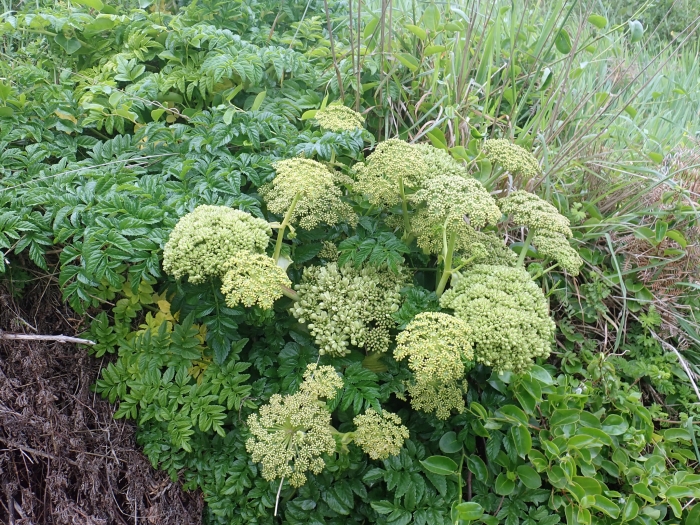Portuguese Angelica
(Angelica pachycarpa)
Portuguese Angelica (Angelica pachycarpa)
/
/

Peter de Lange
Public Domain
Image By:
Peter de Lange
Recorded By:
Copyright:
Public Domain
Copyright Notice:
Photo by: Peter de Lange | License Type: Public Domain | License URL: http://creativecommons.org/publicdomain/zero/1.0/ | Rights Holder: Peter de Lange | Publisher: iNaturalist | Date Created: 2019-11-12T07:41:15-08:00 |




















































Estimated Native Range
Summary
Angelica pachycarpa, commonly known as Portuguese Angelica, is a semi-deciduous perennial herb that is native to the Iberian Peninsula, but more specifically to coastal areas. It typically grows to a height and width of 2-3 feet (0.6-0.9 meters). This plant is characterized by its bold, glossy, dark green foliage and its stout, fleshy nature. The leaves emit a faint aniseed odor when crushed. During the summer and fall, it produces showy umbels of white flowers that can add a delicate texture to garden settings.
Portuguese Angelica is valued for its ornamental glossy foliage and the contrast provided by its white flowers. It is suitable for mixed borders, herb gardens, and as a foliage accent in cottage gardens. While it can adapt to a range of light conditions, from full sun to full shade, it thrives best in part shade. It requires medium amounts of water and prefers well-drained soil. Despite its beauty, it is a short-lived plant and may need to be replaced every few years. Gardeners should be aware that it can self-seed prolifically under favorable conditions, which might be considered invasive in some areas.CC BY-SA 4.0
Portuguese Angelica is valued for its ornamental glossy foliage and the contrast provided by its white flowers. It is suitable for mixed borders, herb gardens, and as a foliage accent in cottage gardens. While it can adapt to a range of light conditions, from full sun to full shade, it thrives best in part shade. It requires medium amounts of water and prefers well-drained soil. Despite its beauty, it is a short-lived plant and may need to be replaced every few years. Gardeners should be aware that it can self-seed prolifically under favorable conditions, which might be considered invasive in some areas.CC BY-SA 4.0
Plant Description
- Plant Type: Herb
- Height: 2-3 feet
- Width: 2-3 feet
- Growth Rate: Moderate
- Flower Color: White
- Flowering Season: Summer, Fall
- Leaf Retention: Semi-Deciduous
Growth Requirements
- Sun: Full Sun, Part Shade, Full Shade
- Water: Medium
- Drainage: Slow, Medium
Common Uses
Bee Garden, Bird Garden, Butterfly Garden, Deer Resistant, Low Maintenance
Natural Habitat
Coastal areas of the Iberian Peninsula
Other Names
Common Names: Glanskvanne
Scientific Names: , Angelica pachycarpa,
GBIF Accepted Name: Angelica pachycarpa Lange